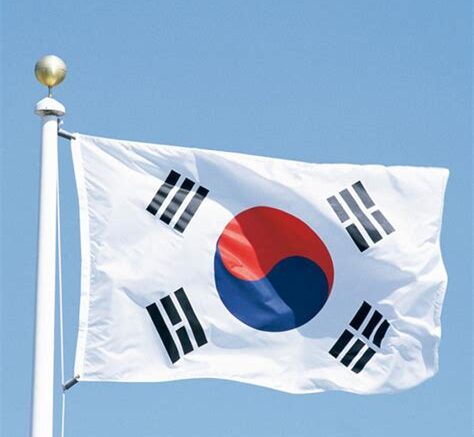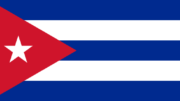The terrible and possibly preventable crowd surge disaster in South Korea that has so far claimed the lives of 151 people at a Halloween celebration has caused me to look back at the times when I’ve either been in crowds that are dangerous for some reason or have seen via the media such disasters occurring. Crowds, even those with innocent intent, can turn quite quickly into mindless monsters that kill and maim.
Because of work or personal interest, there have been times in my life when I’ve spent a lot of time in crowds. I’ve attended some massive demonstrations over the years either as a participant or as someone recording the event for the Press or more recently for this blog. What I’ve learned is that crowds can be dangerous for a number of reasons. You could be a neutral observer at a demonstration but find yourself seen by some in the crowd as a ‘hostile’ or from the ‘other side’ and end up being verbally abused or worse by the demonstrators. Then there are the actual hostiles as I once saw in action back in the 1990’s when BNP supporters attacked a demonstration memorialising Rolan Adams a young Black man who had been killed in what the trial Judge called a racial attack. A demonstration could turn into a riot possibly due to sections of the crowd making a mistaken assumption about what is going on such as what happened during the Poll Tax Riot in 1990 when demonstrators assumed,in part wrongly from my position in Trafalgar Square, that the police were going to use a mounted charge to clear sit down protestors from Whitehall. Or it’s possible that the attendees of a demo have no intention of protesting peacefully and disorder is what they want as with some of the anarchist demonstrations I’ve seen.
I’ve also been in the situation such as at the Wapping Protests of 1986/1987 where I was a member of a Trade Union that was not striking and was therefore seen as an ‘enemy’ by some of the former News International print workers. Then there is the danger inherent in crowds themselves or poor management of them such as occurred at Hillsborough (where I was not present) where surges of massive numbers of people, who had been badly handled by police, pushed into areas that could not accommodate the number of people entering and where those already in this area had no means of escape.
Crowds can be extremely dangerous things. Even if all those attending are sound, intelligent and non-violent individuals, things can turn bad pretty quickly and with devastating results. Crowds, especially those which have a political motivation, can turn into mobs if seemingly provoked and celebrations can turn into carnage if a rumour passes through the people that causes the crowd to surge in one direction or another.
The crowd surge disaster in South Korea is truly and inescapably awful. 151 mostly young people who attended a Halloween celebration in Seoul the South Korean capital, died when the crowd surged towards a narrow alleyway causing a crowd crush. As well as the deaths, there are scores more who were injured in the incident that the more I look at it looks as if it could have been preventable either in whole or in part.
According to press reports, which I need to counsel are early ones which may be inaccurate, what appears to have happened is that surge might have been caused by a rumour. Local press are being reported as saying that a rumour went round parts of the crowd that some, so far unidentified, celebrity had been seen elsewhere in the area. This caused some of the crowd to enter the alleyway, an alleyway that could not accommodate so many people, thereby causing the crush injury deaths that occurred.
It is absolutely terrifying being in a crowd that is surging, to find yourself moving without volition and even finding your feet not touching the floor as you are carried along by the crowd. Your mind tells you that you must stay upright or die under the feet of people who might not even know that you are there.
I can well imagine the horror that must have been felt by those in the Seoul crowd as the crowd surged. They might have wanted to get away but could not. The crowd was so tight that movement out of it would have been impossible. They would have been carried by the crowd into the alleyway with no way to divert themselves from their impending doom.
It’s my belief, based on early news reports that some of the deaths in the alleyway could have been prevented. Police vans could have been parked at either end of the alleyway to deny access to it and keep the crowd on the wider streets where there is less likelihood of crush situations occurring. In the UK it’s quite possible that an alleyway such as this would have been blocked off with linked metal barriers during such an event, primarily for the prevention of crime in these alleyways during the crowd event, but with the bonus that also helps to prevent crush injuries in confined spaces.
The media is saying that there were 100,000 people at this event which is a lot of people and the sort of event that needed to be policed and managed effectively. The fact that so many people were in attendance would almost certainly ensure that if something went wrong then deaths were almost inevitable. I don’t know how this was policed but it may have been policed very differently and inferior to how the Metropolitan Police handled the big Anti-Iraq War demonstrations in London in 2003, where 750,000 attended. In the instance of the 2003 demo there were incredible numbers of people but where there was not the mass crush deaths of the sort that we have seen in South Korea and regrettably in other parts of the world over the years.
The incident in Seoul is truly terrible. Dozens upon dozens of mostly young people have died for no reason apart from elements in the crowd deciding to surge thereby creating this disaster. I dare say that South Korea will hold some sort of inquiry into this incident and that we will eventually find out more of what went on but for the moment we should remember that these were senseless and possibly preventable deaths.
May the memory of those who died be for a blessing.





